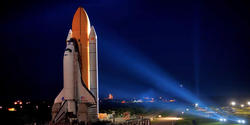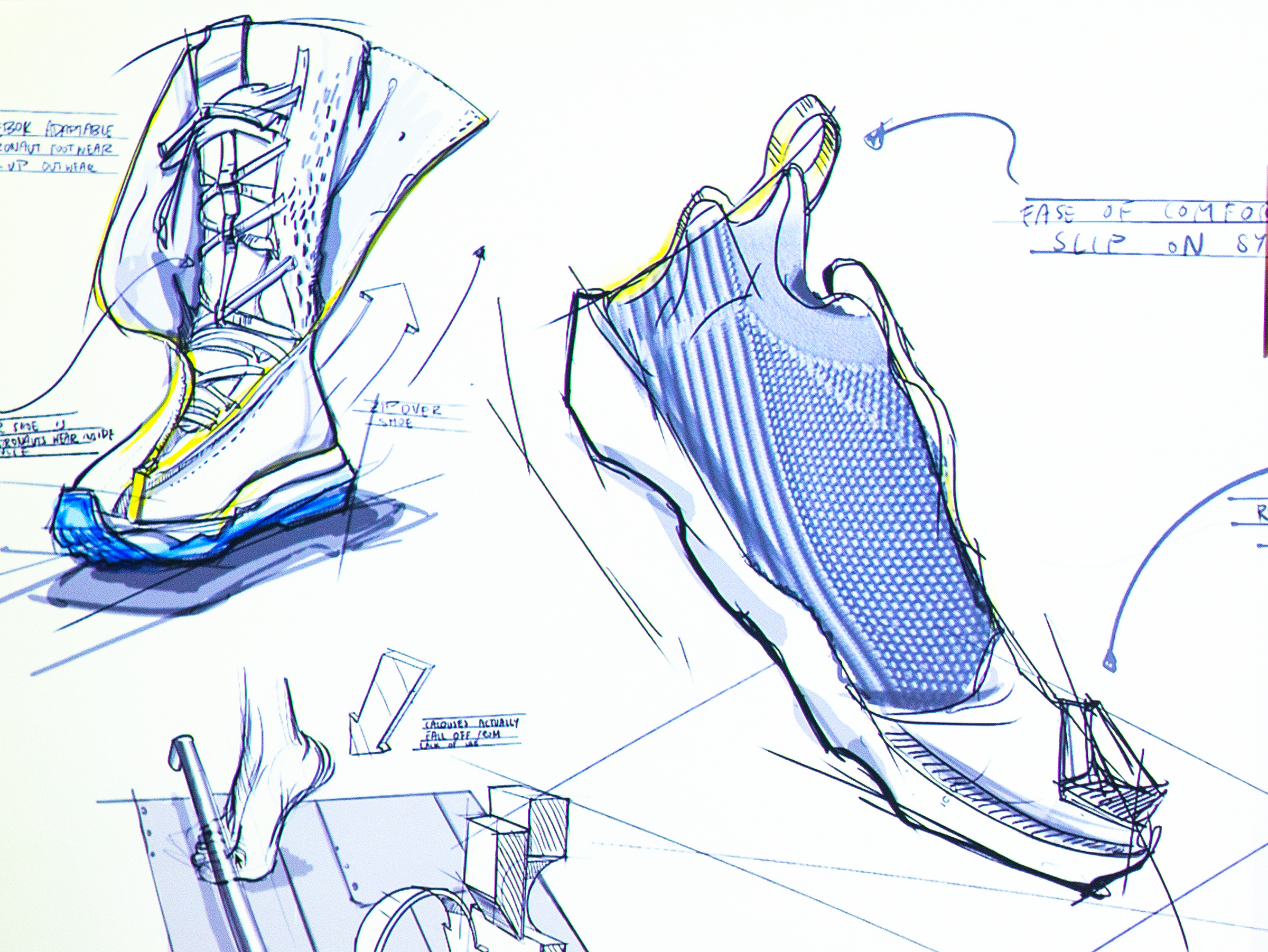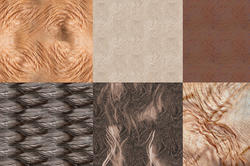An independent research project headed up by RISD’s NASA Coordinator Michael Lye 96 ID puts an entirely new spin on a space suit made for simulated space exploration.
What to Wear on Orion

“We have to do a better job of considering the human in human space flight,” says retired NASA astronaut Nicole Stott. “When you travel to space, you’re not just working but living there, too. If there’s one key thing to consider, it’s how life without gravity affects the way you move.”

“We have to do a better job of considering the human in human space flight.”
Having lived in space for a total of 104 days as a crew member on both the International Space Station and the Space Shuttle, Stott knows of what she speaks. In early October she shared her insights with students in an interdisciplinary fall studio offered through the Apparel Design department called Pack Your Bags! We’re Headed for the Moon taught by longtime RISD Professor Catherine Andreozzi 87 AP.

The goal of the class, Andreozzi explains, is to assist NASA engineers as they prepare for a mission called Artemis now scheduled for 2025. Nine men and nine women will travel to the moon aboard the Orion for the first lunar landing since Apollo 17 in 1972. “Specifically, the class is considering what articles of clothing would be functional, comfortable, sustainable, breathable, aesthetically pleasing, cleanable and able to endure a 30-day mission to the moon,” she says.
“The class is considering what clothing would be functional, comfortable, sustainable, breathable, aesthetically pleasing, cleanable and able to endure a 30-day mission to the moon.”
Students peppered Stott with thoughtful questions when she visited the class virtually: How much does the temperature vary on the space station? How has the experience changed the way you dress on Earth? How much privacy did you have when you were getting dressed?

The tool that proved most useful in a zero-gravity environment, Stott says, is Velcro. She and the international crew she worked with wore pants equipped with strips of the sticky stuff on each leg that helped them carry whatever they needed—screwdrivers, markers, a toothbrush—as they floated from one room to the next onboard the space station.

At a mid-November crit featuring Oculus Quest Virtual Reality headsets, Avantika Velho 22 ID presented a collection of fire-retardant garment designs reflecting balance, function and presentability. “Everything is a fire hazard at 30% oxygen levels,” she notes.
Grad student Samantha Ho MADE 22 presented a modular shoe and sock system that would allow astronauts to clip into bars aboard the space station to prevent them from floating away. “Nicole Stott told us that the tops of her feet were rubbed raw on the space station, and that really stuck with me,” she explains. “I came up with this integrated system using 3D-knitted socks to provide extra cushioning where astronauts need it.”

Dual degree student Emilia Mann BRDD 22 AP also focused on the foot and designed a padded sock using a variety of knitting techniques. Mann worked remotely as an intern in NASA’s Softgoods Lab in summer 2020 and is hoping to land a full-time job there after graduating from RISD. “I like designing for extreme environments and hope to find a job that allows me to combine my love of apparel with problem solving,” she says.
Other students showed colorful flight jackets, comfortable pants and a plethora of jumpsuits with a range of solutions to the problem of lavatory access. “They’re balancing budgetary restrictions due to the high cost of space travel as well as flammability regulations while still considering the astronauts’ fundamental human needs,” Andreozzi notes.


The class is part of a series of space-related design offerings at RISD that also includes Design for Extreme Environments and Designing for Life Off Planet. NASA Coordinator Michael Lye 96 ID, an assistant professor in the Industrial Design department, sat in on Stott’s visit and notes that students outside the class are also working on designing for space as part of the NASA SUITS (Spacesuit User Interface Technologies for Students) Competition and the 2021 BIG Idea Challenge (in which the Brown/RISD team recently earned a Most Creative Concept award).

In recent months, Lye has been working with fellow RISD alum Daniel Leeb 00 FAV of the Iceland Space Agency along with the Arctic Circle, an international organization based in Iceland focused on the future of the Arctic and our planet as a whole. During Arctic Circle’s virtual October conference, Leeb presented the MS-1 Suit designed in 2016 for a simulated mission to Mars. Lye also serves as RISD’s faculty advisor for NASA’s annual Human Exploration Rover Challenge, in which teams of students from across the country design, develop, build and race human-powered vehicles capable of traversing bumpy extraterrestrial terrains.
But back here on Earth, students in Andreozzi’s class remain focused on their capsule collection designs and are getting excited about sharing them with NASA personnel, including RISD alumna Molly Harwood 16 ID. As deputy manager of NASA’s Softgoods Lab, Harwood will potentially test student designs and perhaps include aspects of them in the Artemis crew’s apparel, which ultimately rockets to the moon.
—Simone Solondz
December 1, 2021


